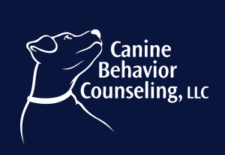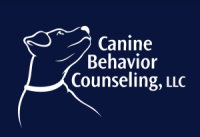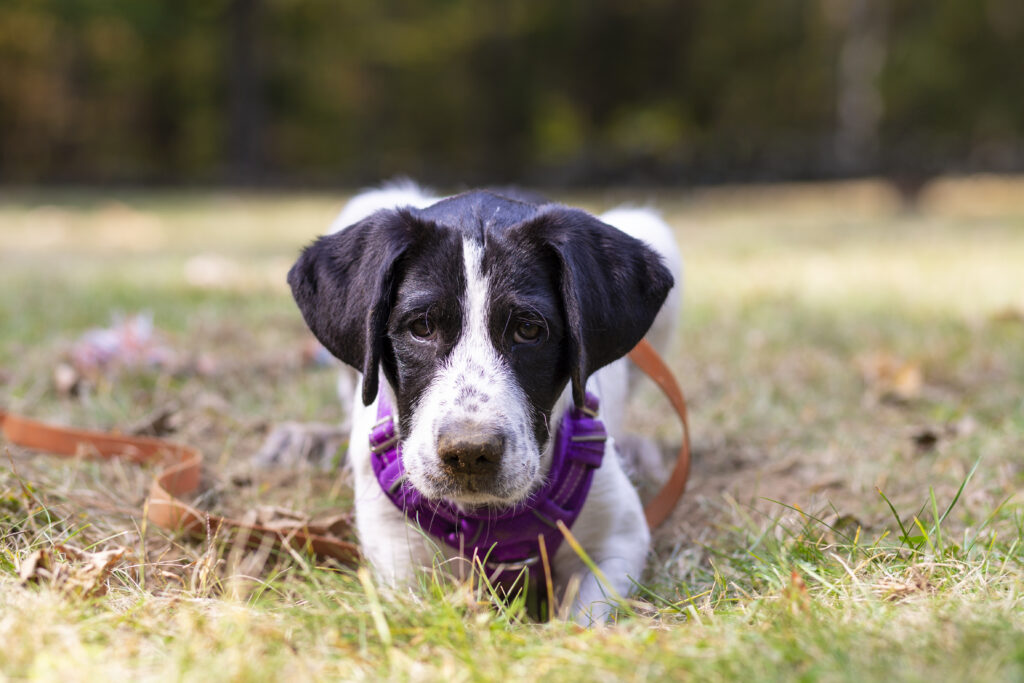The detail is in the Sociability + Arousal + Social Confidence
Many puppies and adolescent dogs steal items which they find interesting. Some for consumption, attention, play, and some try to teach their human how to play tug! Some for the pleasure of chewing on a particular fabric, and some to full-fill an individual need such as the Resource Guarding.
Most common is the puppy who begins to grab and run away with forbidden items such as stolen laundry, paper, or garbage on the ground. If the owner repeatedly gives chase many puppies find this attention exciting. This can encourage the puppy to repeat this behavior as the attention is rewarding!
Owners who repeatedly attempt to pull forbidden items out of a dog’s mouth can make these items worth a million dog dollars. Some puppies realize these items are very valuable to humans and enjoy this new game of stealing and running away.
How can you tell the difference between the social, pushy dog who steals an item for fun versus the emotional dog who may actually bite?
The social dog
The social, confident dog will often run about in a bouncy goofy manner and may even bring the item near you, but not relinquish it. He may try to get you to chase him in play. He may lie down and hover over his prize and even turn his head away showing his desire to keep the object. You will most often see a blinking eye, somewhat open mouth on the sides, tail flipping, combined with continued movement such as running away again and jumping up on furniture. This dog’s behavior feels more playful. This dog has likely learned that when he grabs items humans chase him. Now, if he can only get them to play!
Puppies play with their litter mates all day long! When we adopt them, however, we do not often have hours per day to devote to playing. Most dogs try in a variety of ways to get us to play chase, yet they are often scolded for biting our clothes or running with our items. We need to remember they are puppies until three years of age and love to play! Many dogs are likely trying to get their human to play tug with them, as tug is truly the best part of many dog’s day!
The Emotional dog
The emotional, less social dog will likely move across the room with a more purposeful feeling as he seeks a place AWAY FROM YOU to go under or behind to retain possession of his item. His stride may appear to be stiff and quick rather than bouncy and fluid.
When you approach you will likely notice this dog’s body is stiff as adrenalin begins to pump through his veins, preparing for a fight. This dog is often void of any movement. He will likely be holding the item “deep” in the back of clenched jaws or he may cover it with his lower jaw. His pupils may look large as you notice he is not blinking, but staring at you.
This dog is not interested in cooperating and may be quick to lift his lip, show his teeth or growl to defend his prize. This is what resource guarding looks like, and, sadly, is practiced by the emotional, less social dog.
Resource Guarding can start at an early age
Many emotional dogs will begin to bully their humans by guarding a resource at 6 to 10 months of age. Resource Guarding was once simply described as aggression. To the strong observer, however, there is an obvious pattern to their sociability with humans, in that they are emotional dogs who struggle to understand human behavior.
Emotional dogs may not have received positive socialization during their critical period and are now unsure when interacting with humans. On the contrary, this dog may have experienced positive, gentle socialization with the breeder, but landed in the hands of a dominant human who consistently intimidates him.
Observe how this dog’s body shape changes from a flat back and straight legs to a curled body on bent legs as he greets a new person or even his owner. You may also see his ears go way back, as he turns his face away to avoid eye contact from the human. If pressured, he may also offer appeasement licking.
Is your dog an emotional Greeter?
The Shy Activated Greeter
Many insecure, Shy Dogs will hesitate or avoid to enter a stranger’s space. These dogs lack social confidence and are not likely to guard anything. Some insecure dogs, however, become activated such as barking their displeasure of strangers. They may bark and back away, with a low tail wag while looking up or even jumping on their handler for support. Dogs who become activated, and bark at strangers are trying to keep them a safe distance as they are not highly social.
The Insecure Excitable Greeter
Some emotional dogs will rush in quickly jumping up, with full body wiggles, trying to lick the strangers face. These dogs often change in body shape as they are experiencing a shift in their arousal. This appears to many people as a highly social dog. With closer observation, we see that this dog is insecure with the person and offering appeasement behavior to ward off conflict.
The Rude Greeter
Then there is the dog who rushes in and makes hard physical contact. Their movements are more intense and activated and chaotic such as barking and running around. Learning is difficult as they are highly aroused. This dog is easy to spot as he approaches and moves away in a pattern like behavior.
The Non Social Greeter
The non social, confident dog who approaches with a high head and tail and a purposeful confidence stride is one you would not forget. He may stay at a safe distance or possibly close the distance such that he smells your clothing, closes his mouth and looks you in the eye for a long time without blinking. This dog is void of sociability, but has strong social confidence and has no problem bullying both familiar and unfamiliar humans.
The descriptions above describe dogs who have low sociability with humans. Dogs who lack sociability with humans are much more likely to guard a resource as guarding is highly rewarding, even intrinsically rewarding to them. These dogs have likely never experienced a real trusting relationship with any human, although, some may no longer be interested in one.
Consider Why?
Ask yourself. Why is this social creature choosing to engage in conflict? What need is this dog trying to fill? Is the rush of adrenaline through his body and dopamine through his brain so rewarding that he would bite the hand that feeds him? What we know for sure is this emotional dog needs to learn to trust humans and see humans as safe and trustworthy as part of changing his guarding behavior.
An insecure dog in the hands of a human who uses a cooperative, purposeful socialization training approach, will mature into a wonderful companion. The insecure dog in the hands of a force based or dominant human, will struggle to find rewards to meet his needs. Resource Guarding may just do the trick for this dog.
A successful training plan for RG, involves several segments – here are a few
Relationship Assessment
Because your dog is emotional or anxious in some settings, we want to use a cooperative parenting style. This means you try to ignore bad behavior and say “yes” and reward when he does anything you like. This insecure dog needs more reinforcement each day, so he no longer tries to seek out his own reward.
Consider how this dog’s body changes when he greets you. The more changes in shape, the more he is likely unsure about you or your touch.
Purposeful Socialization
Purposeful socialization until three years of age is critical for your dog to learn to trust and enjoy the company of people.
While it may look like he is social and approaches people quickly, if you take a closer look, you will see anxious arousal with lots of changes in his body shape. Your goal is for this dog to begin to see people as safe and predictors of play or yummy treats, not petting.
Condition a Positive Emotional Response when approached
Be aware of how you approach your dog. Attempt to always approach your dog without intimidation. Approach in a relaxed manner like you would a friend. Take a deep relaxing breadth as you begin to pet your dog.
Note any changes in your dog’s body posture or shape. If you see your dog close his mouth, lean, or look slightly away, pause and just be with him as you relax. We want our dogs to look up at us with an open mouth and relaxed blinking eyes every time!
Adding Tug with Rules
This game is a fun way to teach your dog a “drop” behavior. Begin by dragging your dog’s least favorite tug toy on the ground. When he bites it say “yes, tug”. Keep the item low to the ground to keep the intensity low. Tug for at least a minute while speaking to your dog and petting him.
Do not continue to pull on the toy when you ask for a “drop”. Instead, lighten your grip or let him win to help him understand this is a cooperative game. Put a treat to your dog’s nose when you ask for a “drop”. Reward generously with two or three treats when he drops it to the floor. Do not reach for the toy right away. Ask him to “get it” or “fetch” and see if he will bring you the toy for play.
As this game progresses, try showing your dog the toy and ask for a “sit”, say “yes” when he complies and then offer the toy as a reward. Again, keep the intensity low by keeping your arm moving smoothly back and forth. After a minute of fun tug, ask for a “drop” and reward. Now just let him get the toy. Avoid annoying him by asking for a “drop” ever thirty seconds as this will put too much value on the toy. Only ask for a drop every minute or so as the “tug” is the best part for your dog! If your dog is more interested in the food, lower the value of your treats.
Growling with movement
When you are playing tug, note your dog’s vocalizations and body movements. He may growl and pull hard backwards showing he loves tug! He may also growl and try to shake the toy from your hand. If your dog is moving his feet or body, blinking his eyes, and avoiding eye contact, then you are likely experiencing arousing play.
Growling without movement
If your dog freezes, such that his entire being stops moving, and his growl is low in tone, breathe and look at his face. If he is staring at you and beginning to curl his lip, he means business. If he refuses to trade the item for a treat and he is motionless, stop playing tug and reach out to a professional or read my next blog on what to do.
One final thought – Be fair when playing tug! When you are done playing, say “done” as you put the toy away or let him carry it to the house or out of the room. Avoid asking for a “drop” and putting the toy in your pocket or the cabinet. This is not fair, and your dog may not comply next time you ask for a “drop” cue.
Summary
Dogs who steal items and use aggression to keep these resources are socially insecure with humans, yet have social confidence in themselves to guard. They are trying to bully their humans because it makes them “feel” in control as they receive a rush of dopamine in their brain. This means it is self rewarding to them. So, avoid loosing your cool on your dog. Instead, take a breather and use a cooperative approach.


